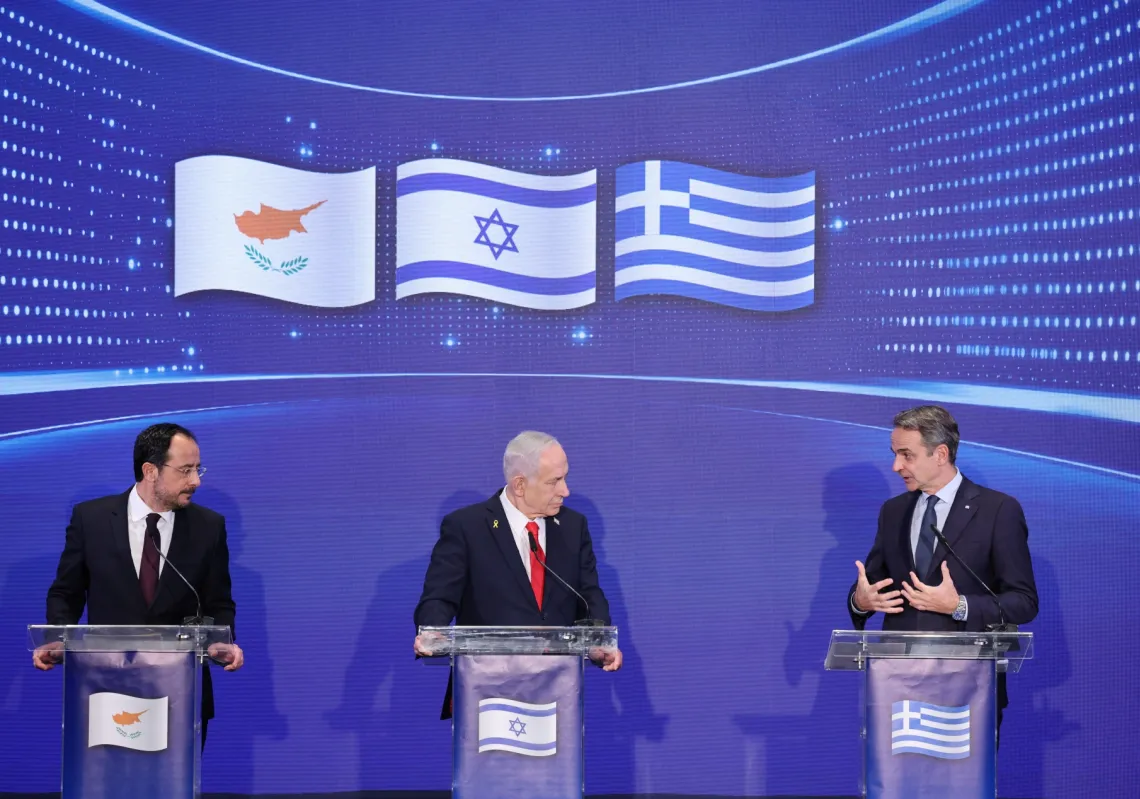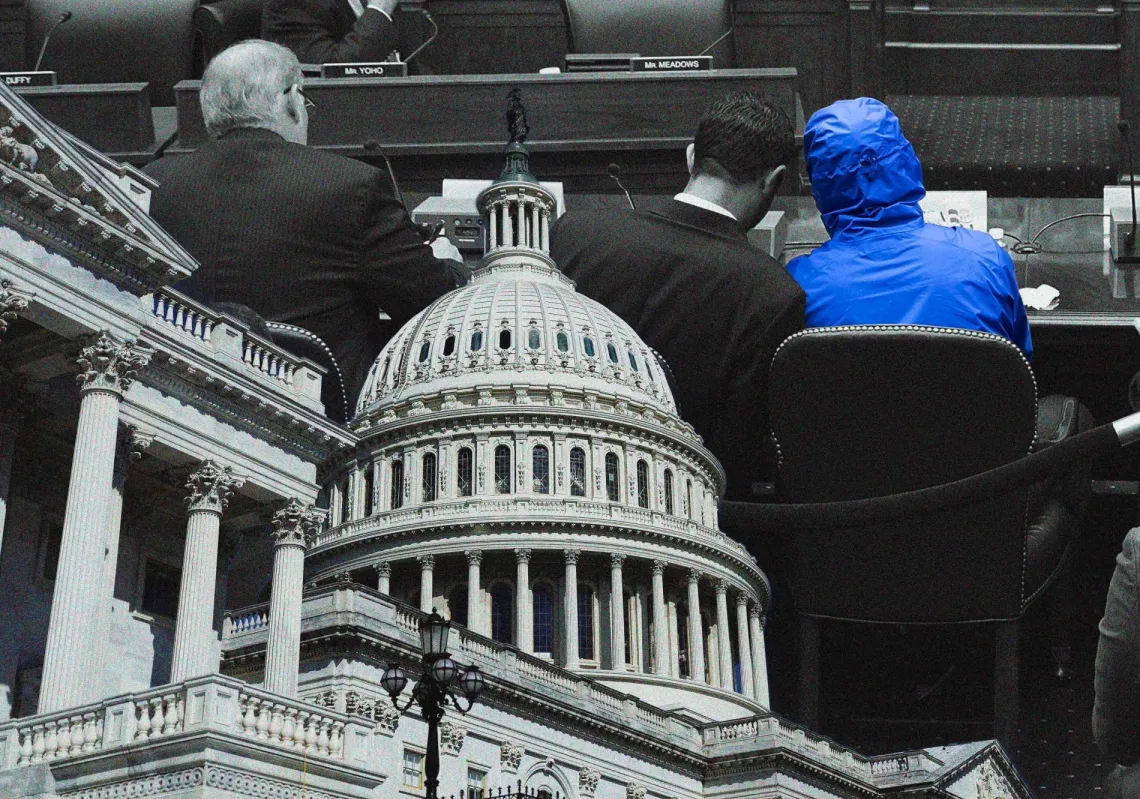 The Strait of Hormuz [/caption]
The Strait of Hormuz [/caption]
During the Iran-Iraq War, Iran implemented an attrition strategy and a policy of economic strangulation to force Iraq into submission. This led to an Iranian deal with Syria to cut off Iraq’s trans-Syrian pipeline in 1982. Together with the closure of Iraq’s Gulf ports at the start of the war, the closure of the Syrian pipeline meant that if Iraq were to stay financially solvent it had to find a way around the Strait of Hormuz, hurt Iran’s ability to export oil, or both. This led to the so-called ‘Tanker War,’ where each side targeted the other’s shipping in the Gulf, a dramatic rise in shipping insurance rates, and to efforts by Iraq’s allies—including the US—to seek out ways to bypass the Strait of Hormuz. Looking at the situation in Gulf today, with Iran threatening once again to close the strait, it has becoming apparent that the Gulf states heeded the lessons of the past and have applied them to the current crisis. Simply put, the Iran-Iraq War taught them that they needed to reduce their reliance on what former US Secretary of State Cyrus Vance called “the jugular vein of the West”: the Strait of Hormuz.
[inset_left]Simply put, the Iran-Iraq War taught them that they needed to reduce their reliance on what former US Secretary of State Cyrus Vance called “the jugular vein of the West”: the Strait of Hormuz.[/inset_left]
Recognizing the threat that the strait’s closure posed, in the early 1980s Saudi Arabia constructed two major pipelines, both over 1,000 km long, from the Eastern province to the Red Sea port of Yanbu. By 1992, after the Gulf War, the Saudis had expanded the pipeline to a capacity of 4.5 million barrels per day (bpd). The purpose was undoubtedly to mitigate against potential threats to the Strait of Hormuz, on which Saudi Arabia and the Gulf states were almost completely reliant. But Saudi Arabia was not alone. As I point out in my book, Covert Relationship (Praeger, 2010), during his famous trip to Baghdad in December 1983, Donald Rumsfeld urged the Iraqi regime to agree to build a tie-in line from Iraq’s southern oil facilities outside Basra to Saudi Arabia’s existing Petroline, which consisted of two parallel pipelines running eastward to the Red Sea. Completed in September 1985, this became known as the Iraq Pipeline in Saudi Arabia (IPSA) and was operational until 1990, when Saudi Arabia cut Iraq off in response to its invasion of Kuwait. It was expropriated completely in 2001 as payment for outstanding Iraqi debts. Nevertheless, with the end of the Iran-Iraq War in August 1988, the threat to the Strait of Hormuz subsided—at least until recently.
In late December 2011, amid Israeli threats to bomb Iran’s nuclear facilities, the Iranian government threatened to close the Strait of Hormuz in the event that Iran was attacked. The situation continued to escalate into January and February, when the European Union agreed to an embargo of Iranian oil and the US froze the assets of Iranian financial institutions and banned international banks from making oil transactions with Iran with the threat of being blacklisted. After a brief period of hope in April and May, when Iran agreed to talks on its nuclear enrichment program, things fell apart and the EU and US sanctions came into effect at the start of this month.
The implementation of the sanctions has raised the stakes for Iran, which is already in dire financial straits. It has also increased the likelihood that the government will close the Strait of Hormuz, though this would harm Iran just as much as any of the Gulf states by cutting off its own oil exports from its main terminal at Kharg Island. But Iran would not suffer alone: if the Strait of Hormuz was actually closed, it would have a devastating impact on the already-struggling global economy. Indeed, as Charles Emerson and Paul Stevens from Chatham House point out, “a sharp oil price spike could tip the global economy into a further slowdown.” The problem is that approximately 17 million bpd pass through the Strait of Hormuz, roughly 32 percent of daily global oil exports. It appears that Saudi Arabia, the United Arab Emirates (UAE), and the US have long been preparing for this contingency.
At the time of Iran’s renewed threat to close the strait in early 2012, Chatham House estimated that the capacity of the pipelines that bypass the strait was somewhere around 8 million bpd. In the past two weeks, however, Saudi Arabia and the UAE announced separately that a further 3.15 million bpd could still make it onto the market if Iran were to act. On 28 June, Saudi Arabia announced that it had been secretly testing the IPSA for the past four months, to ensure that it could be converted back to transporting oil instead of the natural gas it transports at present. This means that an additional 1.65 million bpd could stay on the market. In addition, in late June the UAE announced that its Harshen-Fujairah pipeline, which began construction in 2008, had come online and would be fully operational by August, allowing an addition 1.5 million bpd to bypass the strait. These two pipelines, combined with the 8 million bpd already bypassing the strait, mean that at least 11.15 million bpd would still be able to bypass this choke point and make it onto the market. The smaller Gulf states, like Bahrain, Kuwait, and Qatar, as well as Iraq, would be in trouble, but they would not be alone.
[inset_right]Unfortunately, the smaller Gulf States, like Bahrain, Kuwait, and Qatar, as well as Iraq, will be in trouble, but they will not be alone. [/inset_right]
Depending on the means with which Iran respond to the new sanctions, it could also starve itself of the meager 1.5 million bpd that it is currently exporting, while the remaining 1 million bpd it is pumping sits in storage on- and offshore. However, the US has made it clear that it will respond aggressively to any Iranian provocation, with the New York Times quoting one US official as saying, “Don’t even think about closing the strait. We’ll clear the mines. Don’t even think about sending your fast boats out to harass our vessels or commercial shipping. We’ll put them on the bottom of the Gulf.” The US has also quietly expanded its military deployment in the Gulf to include a floating military base, which could be used as a stationing point for mine sweeping, and—in a worst-case scenario—military attacks against Iran.
Interestingly, this is a throwback to US operations in the Gulf during 1987-88, which led to direct clashes with the Iranian navy, the sinking of several of its vessels, the destruction of a number of oil platforms, and the mistaken downing of an Iranian passenger plane that killed all 290 passengers on board. The Iranians have not forgotten this, and over the past few days have been rattling sabers in the Gulf. In the end, how the crisis turns out will ultimately boil down to how Tehran decides to act. If it chooses to act aggressively, it will be met with aggression. However, if it chooses a more peaceful route, the West must take a lesson from how it treated the Russians after the fall of the Iron Curtain in the early 1990s and be accommodating toward the regime, while creating opportunities to save face. For the sake of the region, the global economy, and the Iranian people, let us hope the regime chooses a more peaceful path: the consequences of aggression are unpredictable at best.









